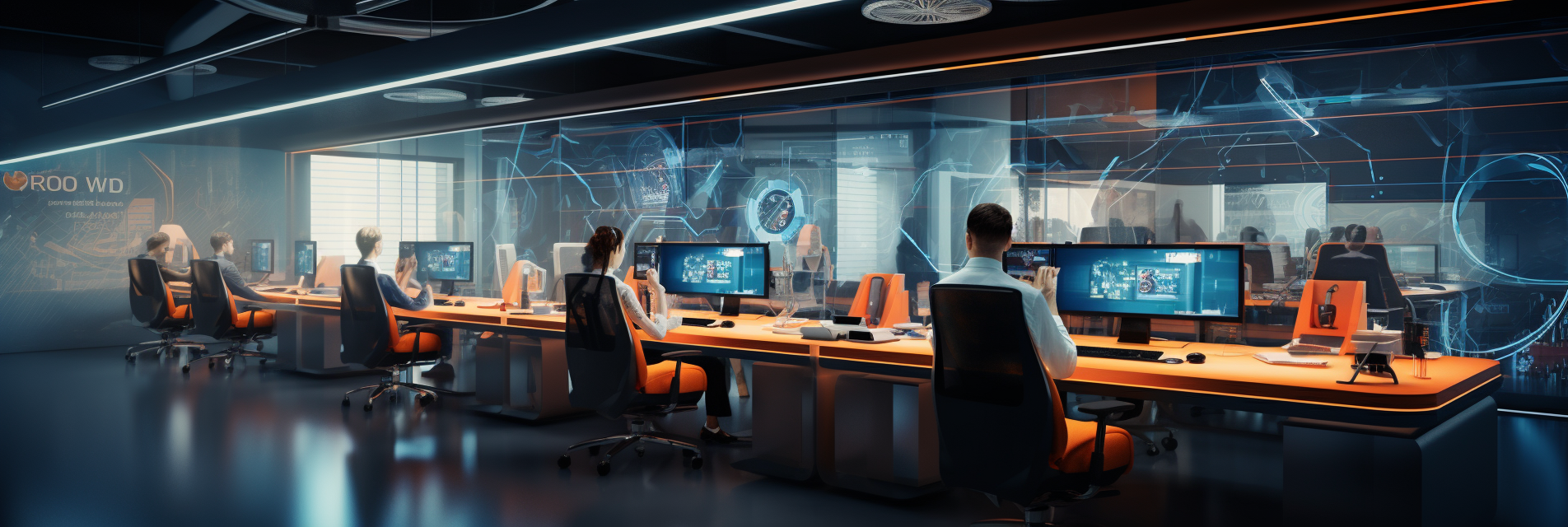
The Future of Robotics: Trends and Predictions for the Next Decade
Over the past decade, robotics has rapidly evolved, transforming the way we live and work. With advancements in artificial intelligence, machine learning, and sensors, robots are becoming more sophisticated, autonomous, and ubiquitous.
In this blog, we’ll explore the trends and predictions for the future of robotics in the next decade.
- Collaboration Between Humans and Robots
One of the major trends in robotics is the collaboration between humans and robots. Rather than replacing human workers, robots are being designed to work alongside them, augmenting their capabilities and enhancing their safety. For example, in manufacturing, robots are being used to assist human workers in tasks such as lifting heavy objects or performing repetitive tasks, reducing the risk of injury and increasing productivity. According to a report by the International Federation of Robotics, the global sales of collaborative robots (cobots) reached $1 billion in 2019, and are expected to grow to $8 billion by 2025.
- Increased Autonomy and Mobility
Another trend in robotics is the increased autonomy and mobility of robots. With advancements in machine learning and sensor technology, robots are becoming more capable of navigating complex environments and making decisions on their own. For example, autonomous drones are being used in agriculture to survey crops and identify areas that need attention. In logistics, autonomous mobile robots (AMRs) are being used in warehouses to transport goods and perform inventory management. According to a report by Grand View Research, the global market for autonomous mobile robots is expected to reach $8.5 billion by 2027.
- Robots in Healthcare
Robots are also increasingly being used in healthcare, both for diagnosis and treatment. In surgery, robots are being used to perform minimally invasive procedures, reducing the risk of complications and recovery time. In nursing homes, robots are being used to assist with tasks such as medication management and patient monitoring. According to a report by Research and Markets, the global market for medical robots is expected to reach $20 billion by 2023.
- Service Robots for Domestic Use
Service robots for domestic use are also gaining popularity, with advancements in natural language processing and machine learning. These robots are designed to assist with tasks such as cleaning, cooking, and home security. For example, the iRobot Roomba is a robot vacuum cleaner that uses sensors to navigate and clean floors. According to a report by the International Federation of Robotics, the global sales of service robots for personal and domestic use reached $5.6 billion in 2019, and are expected to grow to $19.5 billion by 2025.
- Robotics in Education
Finally, robotics is increasingly being used in education to teach students about coding, electronics, and robotics. Robotics kits such as LEGO Mindstorms and VEX Robotics are being used in schools to teach students about robotics and engineering. According to a report by MarketsandMarkets, the global market for educational robots is expected to reach $1.7 billion by 2023.
In conclusion, the future of robotics is bright, with new and exciting applications being developed every day. From collaborative robots in manufacturing to service robots for domestic use, robotics is transforming the way we live and work. With advancements in artificial intelligence and sensor technology, robots are becoming more capable, autonomous, and mobile. As we move into the next decade, we can expect to see even more innovations in robotics, as the industry continues to grow and evolve.
FAQs –
Q. What is the future of robotics?
A. The future of robotics is bright, with advancements in artificial intelligence and sensor technology allowing for more sophisticated and capable robots. From collaborative robots in manufacturing to autonomous drones in agriculture, robots are transforming industries and enhancing our daily lives.
Q.Will robots replace human workers?
A. While robots are becoming more capable and autonomous, they are not likely to replace human workers entirely. Instead, robots are being designed to work alongside humans, augmenting their capabilities and enhancing their safety.
Q. What industries will be impacted by robotics?
A. Many industries will be impacted by robotics, including manufacturing, healthcare, logistics, and agriculture. Robots are being used to perform tasks such as inventory management, surgery, and crop monitoring, among others.
Q.How will robotics impact education?
A. Robotics is increasingly being used in education to teach students about coding, electronics, and robotics. Robotics kits such as LEGO Mindstorms and VEX Robotics are being used in schools to teach students about robotics and engineering.
Q.What are some ethical considerations surrounding robotics?
A. As robots become more autonomous and capable, there are ethical considerations surrounding their use. For example, there are concerns about the impact of robots on employment, as well as the potential for robots to be used for harmful purposes.
Q. What is the future of service robots?
A. Service robots for domestic use are becoming more popular, with advancements in natural language processing and machine learning. These robots are designed to assist with tasks such as cleaning, cooking, and home security, and are expected to become more capable and sophisticated in the future.
Q. What are some challenges facing the robotics industry?
A. The robotics industry faces several challenges, including the development of safe and reliable robots, the integration of robots into existing systems, and the cost of robotics technology. However, with advancements in technology and increased adoption of robotics, these challenges are likely to be addressed in the coming years.
Previous articles

AI 2024: Predictions and Advances in Artificial Intelligence
There’s no doubt 2023 was a landmark year for AI technologies. From healthcare to customer service and beyond, AI transformed the way the average person communicates, works, and solves complex problems. In this article, we’ll delve into the advances and breakthroughs achieved in AI development, as well as the opportunities and challenges that lie ahead […]

AI Call Centers: Turning Customer Support into Customer Experience
When a customer contacts an AI-enabled call center, two things can happen: The customer leaves satisfied with the interaction Their issue is not resolved and they leave with a negative association of your brand Keeping customers satisfied relies on the appropriate use of AI in call centers. This often means centering AI automation as a […]